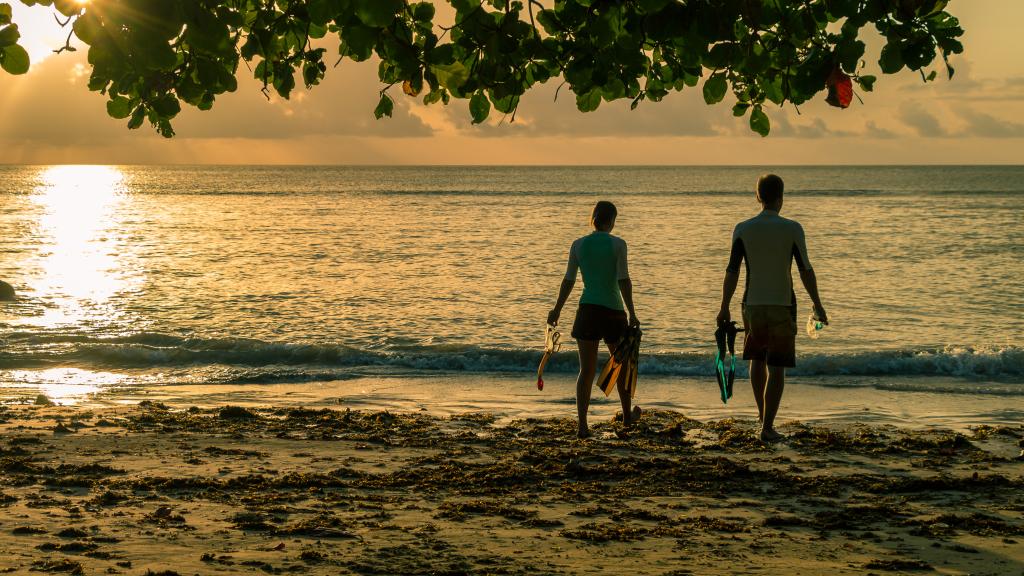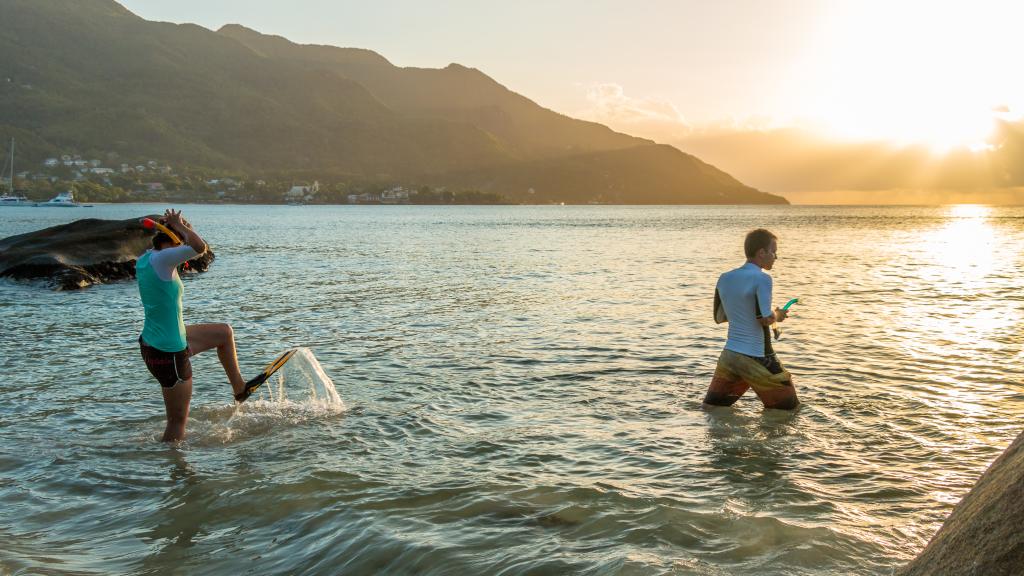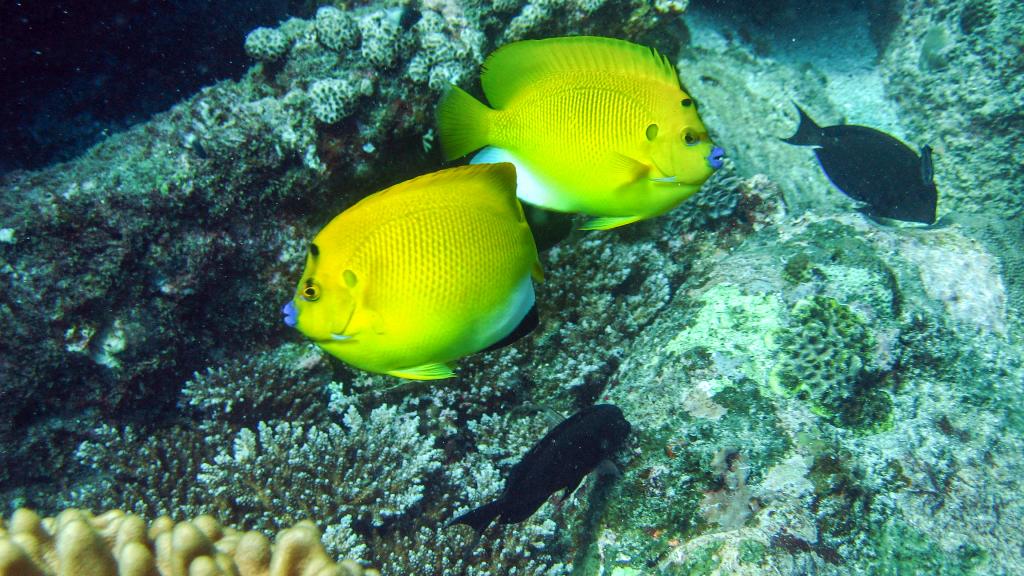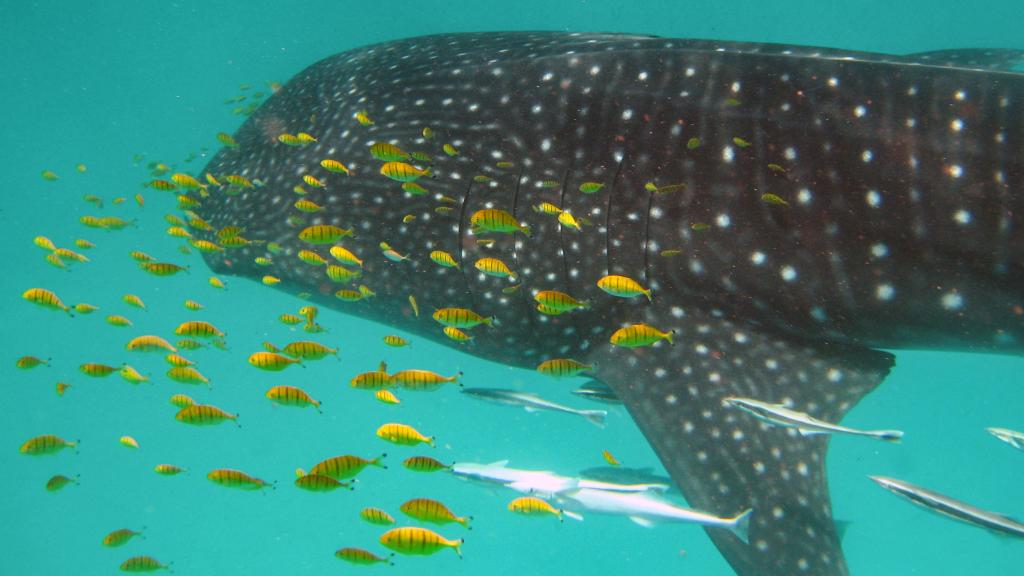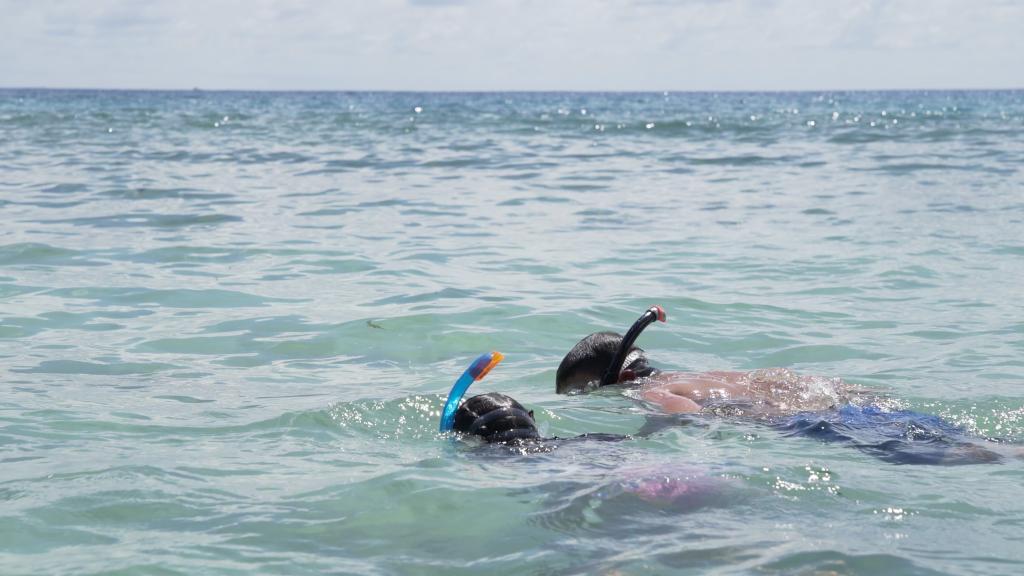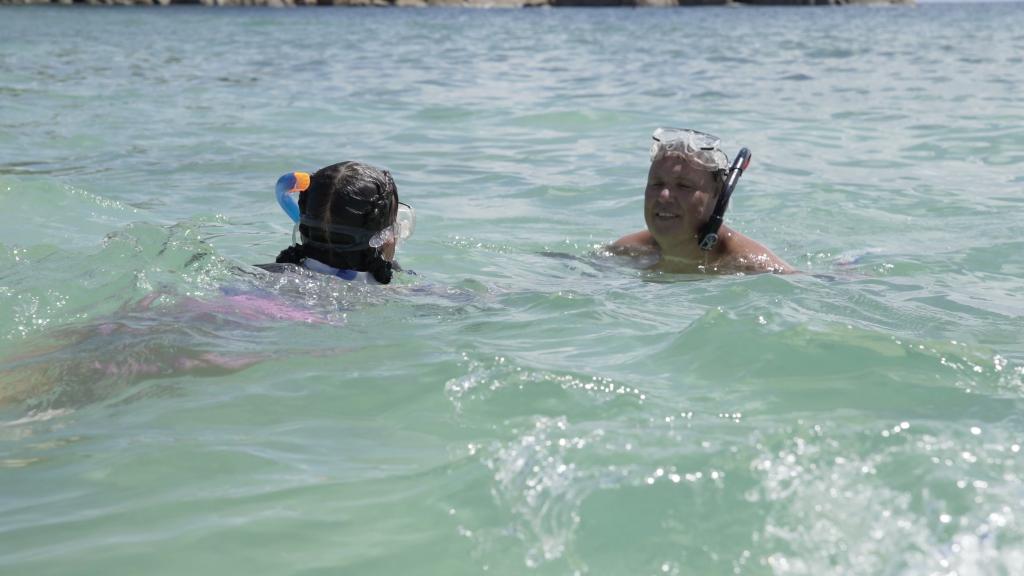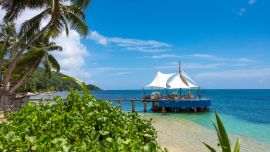Diving & snorkelling on Mahé
The North of Mahé
Diving
Besides hiking, the north of Mahé is also a great spot for diving tours. Beau Vallon offers different diving centre options, with a variety of different tours. The diving instructors here also know which spots to recommend. You should set aside between €60 and €100 for such a service. Besides large granite formations and colourful coral reefs, a variety of animal life waits to be discovered, including mantas, rays, turtles, octopus, sharks, whale sharks, dolphins, snappers, butterfly fish, sponges, invertebrates, and a wide range of other fish species.

5 km north of Mahé lie the small rocky islands of Brissare Rocks, which you can visit from September to May. Due to strong currents, the area attracts different big fish, including smaller sharks and barracudas. The colourful coral arrays bring with them an impressive collection of fish down to a maximum depth of 20 metres. Besides Brissare Rock, the Dragon's Teeth offer you the chance to meet lobster, turtles, whitetip sharks, eagle rays, and batfish, all down to a depth of 23 metres.
Shark Bank is a huge rock that is located 8 km north-west of Mahé, extending down into the ocean depths. Huge schools of yellow-striped snappers, jacks, batfish, turtles, parrot fish, eagle rays, reef sharks, stingrays, dolphins, and sometimes whale sharks are all present here. The diversity on show here is something at which to marvel, between 18 metres and 30 metres deep.
Trompeuse Rocks lie 24 km off the coast of Mahé to the north-east and also accommodate a diverse array of underwater life. Those who go in the water here should watch out for strong currents. Also appealing is the uninhabited Mamelles island, located about halfway to Trompeuse, which offers a shallow reef for exploration.
The Aldebaran is a 28 metres fishing boat that sunk in 2008. These days, it attracts colourful marine life, including small fish, moray eels, lionfish, sweetlips, starfish, and batfish. Sometimes, you may even see sharks and giant groupers here. The wreck is located about 28 - 40 metres deep into the water, where the currents can be strong. Another wreck of the Ennerdale tanker washed ashore in 1970. 25 metres down, you can see separate parts of the wreck, and various large fish have decided to make this their home. A few hundred metres away from Mahé lie the small island l'Ilot, and to the north, east, and west of this you can find rocky formations that are home to large reef fish and formations of soft coral. From November to March, you may even get luck and encounter a whale shark.
Snorkelling
In addition to the diving sites, there are also some good snorkelling options here. The best reefs are usually only accessible by boat, but in certain places, snorkellers can reach spectacular underwater scenery without the help of any boats. In the north of Mahé, some of the best spots include the northern and southern end of Beau Vallon Bay and Anse Major. Boat trips to the Baie Ternay Marine Park or the Sainte Anne Marine National Park are also promising.
The South of Mahé
Diving
In the south of Mahé, the variety of fish and coral is almost overwhelming, and even if you can only visit the region with a diving centre, trips here are well-worth a look.
Many countries have diving spots with 'Shark' in their name, but often you never see the eponymous animals there. That said, at Shark Point in the Seychelles, you will certainly see sharks. In this case, white tips swim around, sometimes floating in the ocean freely. As with many diving sites on Mahé, the sea can be quite choppy here.
Turtle Rock is a collection of granite blocks to the south of the Sainte Anne National Marine Park, and this large diving area contains white tip sharks, nurse sharks, eagle rays, barracudas, jacks, tuna, stingrays, bat fish, scorpion fish, and stone fish. The maximum depth here is 18 metres. During the east monsoon season, diving here is not recommended.
Three nautical miles from the east coast is the Lost City, one of the best spots in the inner islands. Here, canyons are etched into granite benches in a totally intact underwater world. The highlight is also the swim through the southern end of the area. Sharks, barracudas, stingrays, schools of fish, wrasses, and much more can all be seen down to a maximum depth of 30 metres. All of the fish in this area are larger than average. During the south-east monsoon season, diving here is not recommended.
Snorkelling
In the south of Mahé, it pays to pack snorkelling gear for trips to the north end of Anse Royale, the south end of Anse Takamaka, Anse Forbans, Anse Soleil, and Port Launay.
